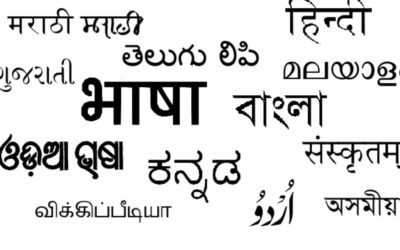Financial inclusion, in today’s day and age is not what it was a decade or two ago, when having a bank account was the starting point. Today, ‘digital‘ is a key piece in the puzzle of financial inclusion, specially for low income communities. India is set to have 820 million smartphone users by 2022. This growth is primarily driven by increase in smartphone users in rural India with a year on year growth of 35%. Though these figures are encouraging, it is not an end, rather a starting point for working on digital and financial inclusion of millions of people in rural India.
What is Digital Inclusion and Digital Financial Inclusion?
Digital inclusion is the ability of an individual to access and use information and communication technologies (ICT) i.e. the availability of hardware, software and technical skills. Digital Financial inclusion, on the other hand is the ability of an individual to access and use financial services through digital mediums. As you might have guessed, digital inclusion is a pre-requisite for digital financial inclusion.
Experiences from the ground
Recently, Shram Sarathi conducted a study in Gogunda block of Udaipur district in south Rajasthan to understand the elements which are enablers of digital financial inclusion levels in a community that’s majorly tribal and wage labour dependent. The study gave us insights about the community in terms of the extent of cash-based transactions, access to mobile phones, and awareness, usage and ease of access to digital payment technologies. The results of the study highlighted both the reassuring as well as challenging aspects of the scenario.
Firstly, access to digital technologies and technical know-how is fairly dispersed. Within rural areas, there are certain pockets which have higher adoption and usage than others. This can be understood as a factor of exposure. Areas with higher out-migration to cities and more regular payments tend to show higher availability of smartphones and awareness about digital financial services.
Secondly, digital financial service (DFS) providers, who are from the community and act as access points for people to receive information as well as conduct basic banking transactions, are adequately present in rural communities. People have a high level of dependence on these channels but little trust due to lack of transparency and an inability to verify and question the services provided by them.
Thirdly, though awareness of the existence of self-use digital finance platforms such as Phone Pay, Google Pay is fairly common among most groups, know-how and use is limited to the relatively younger, predominantly male groups who have access to Debit cards.
Lastly, among those who make use of DFS apps, the usage is still limited mainly for the purpose of making money transfers and remittances. Additional uses such as bill payments or net-banking are fairly uncommon.

Why focus on bridging the digital gap for financial inclusion?
Today, in India, with the reach of Business Correspondents (BCs), Common Service Centres (CSCs), state service delivery and e-governance correspondents (all of which use digital means such as micro-ATMs), access to entitlements has definitely increased for the common person. However, a renewed focus on simultaneously building capacities of people and facilitating them to directly access their entitlements using self-service rather than assisted modes is imperative because:
- Increasing number of people in rural areas own digital devices making it important to utilise existing hardware and software capacities
- Improving access to entitlements, turnaround time and costs involved in accessing services provided by the government
- Decreased dependency on the already overburdened physical banking system and other delivery channels
- Digital empowerment and increased control over financial decision making
- Prevention of leakages which result out of inefficient systems and unfair practices of service delivery agents
Moving forward
For communities living in rural areas, due to an unequal distribution of enabling factors such as resources, know-how and connectivity, the shift to digital is yet to become more organic. There are certain means by which this transition could be facilitated in order to reap benefits of the growing smartphone user base in rural areas:
- Regulating operations of BCs and last mile agent networks to curbing malpractices. Currently, there isn’t any centralised tracking of these agents, making it difficult to establish accountability for their actions. National Payments Corporation of India (NPCI) must mandate registration of all BCs and agents so as to manage them better and facilitate tracking of agents in case of consumer complaints.
- Self-service digital models rely heavily on the user’s literacy levels, excluding illiterate or less literate populations, especially women, from participating in these activities. Only those who can operate an ATM (debit/credit) card can generate a UPI id which is a basic requirement for having an identity to perform digital transactions, thus excluding a majority of low income users.
- Fin-tech companies and DFS providers should focus on a simplified and regional language version of the app(s) with voice-over features.
Also read:
To The Last Mile: Digital Financial Services In Rural Communities
Leading Up To Scepticism: The Curious Case Of Cash Withdrawal




0 Comments